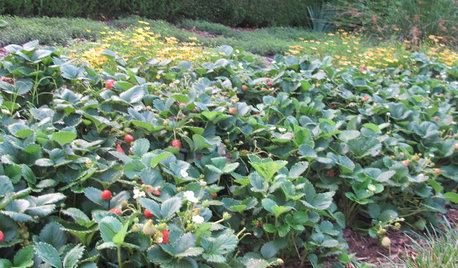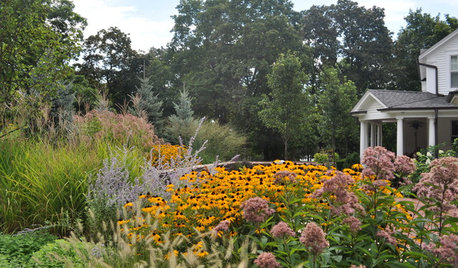Organic fertilize program??
sambo725
14 years ago
Related Stories

GARDENING GUIDESGet on a Composting Kick (Hello, Free Fertilizer!)
Quit shelling out for pricey substitutes that aren’t even as good. Here’s how to give your soil the best while lightening your trash load
Full Story
INSIDE HOUZZFor Houzz Pros: Learn About the New Affiliation Badge Program
Enhance your professional profile with badges showing your schools, associations and more
Full Story
GARDENING GUIDESHow to Switch to an Organic Landscape Plan
Ditch the chemicals for a naturally beautiful lawn and garden, using living fertilizers and other nontoxic treatments
Full Story
GARDENING GUIDESHow to Keep Your Citrus Trees Well Fed and Healthy
Ripe for some citrus fertilizer know-how? This mini guide will help your lemon, orange and grapefruit trees flourish
Full Story
GARDENING GUIDES5 Prairie Wildflowers That Can Heal Your Soil
Get free, organic soil fertilizer with nitrogen-pumping plants that draw pollinators too
Full Story
GREEN BUILDINGWhat's LEED All About, Anyway?
If you're looking for a sustainable, energy-efficient home, look into LEED certification. Learn about the program and its rating system here
Full Story
GARDENING GUIDESCommon Myths That May Be Hurting Your Garden
Discover the truth about fertilizer, soil, staking and more to keep your plants healthy and happy
Full Story
REGIONAL GARDEN GUIDESSoutheast Gardener's September Checklist
Fertilize strawberries, plant a tree or two and beckon hummingbirds to your Southern garden this month
Full Story
GARDENING GUIDESPacific Northwest Gardener: What to Do in September
Put in cool-weather veggies, fertilize your lawn and tidy the garden this month before chilly weather arrives
Full Story
FALL GARDENING5 Ways to Put Fall Leaves to Work in Your Garden
Improve your soil and yard the organic way with a valuable garden booster that grows on trees
Full StorySponsored


dchall_san_antonio
Kimmsr
Related Professionals
Forest Acres Landscape Architects & Landscape Designers · Anderson Landscape Contractors · Surprise Landscape Contractors · Athens Landscape Contractors · Cockeysville Landscape Contractors · Hoffman Estates Landscape Contractors · Pleasant Prairie Landscape Contractors · Lake Forest Driveway Installation & Maintenance · Riverside Driveway Installation & Maintenance · Sterling Driveway Installation & Maintenance · Wauconda Driveway Installation & Maintenance · Seabrook Swimming Pool Builders · Annapolis Fence Contractors · Millbrae Fence Contractors · La Mirada Fence Contractorsdchall_san_antonio
bpgreen
dchall_san_antonio
sambo725Original Author
Kimmsr
dchall_san_antonio
dchall_san_antonio
lou_spicewood_tx
dchall_san_antonio
solc
dchall_san_antonio
gatornation81
jimsbiz
WestchesterGrower
dchall_san_antonio